exas-based VLK Architects is no stranger to being recognized for its outstanding accomplishments when it comes to designing public schools such as the monumental and expressive Dan Dipert Career and Technical Center.
“I’d give it an A for sure,” says Sloan Harris, a partner with VLK Architects, about the sprawling 165,000-square-foot CTC that’s being heralded as the flagship campus for the Arlington Independent School District.

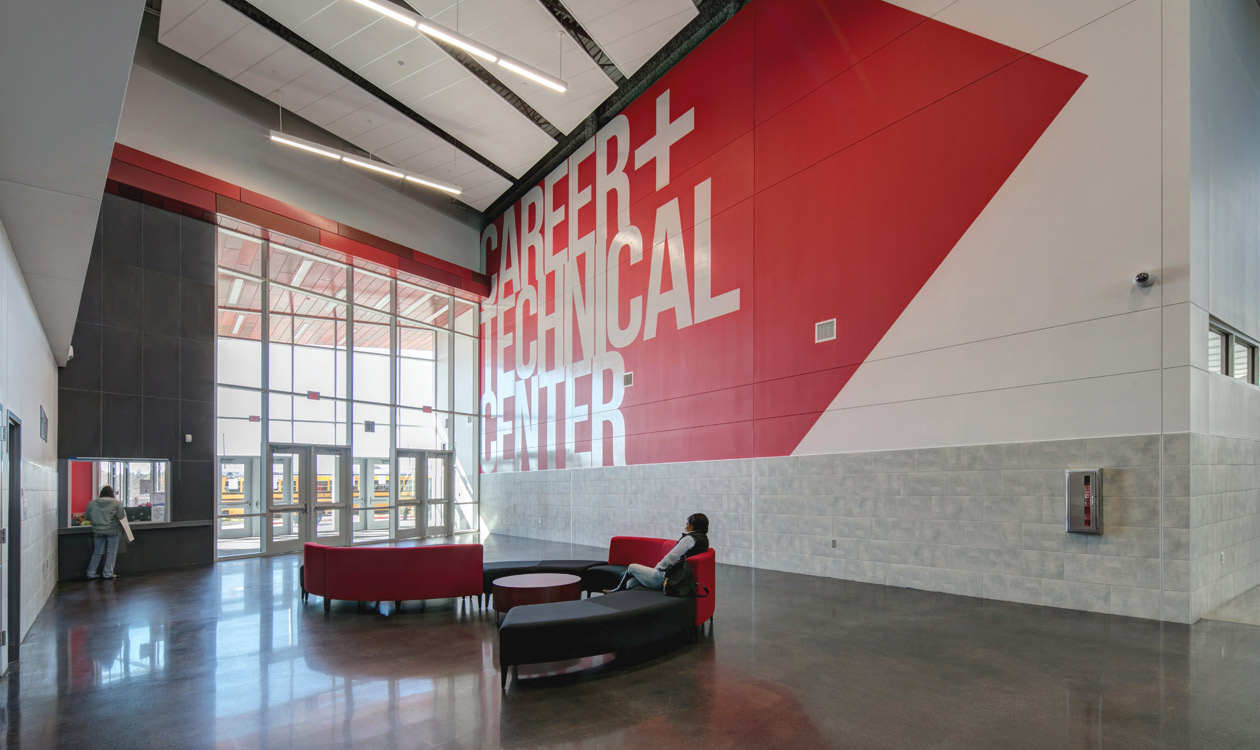
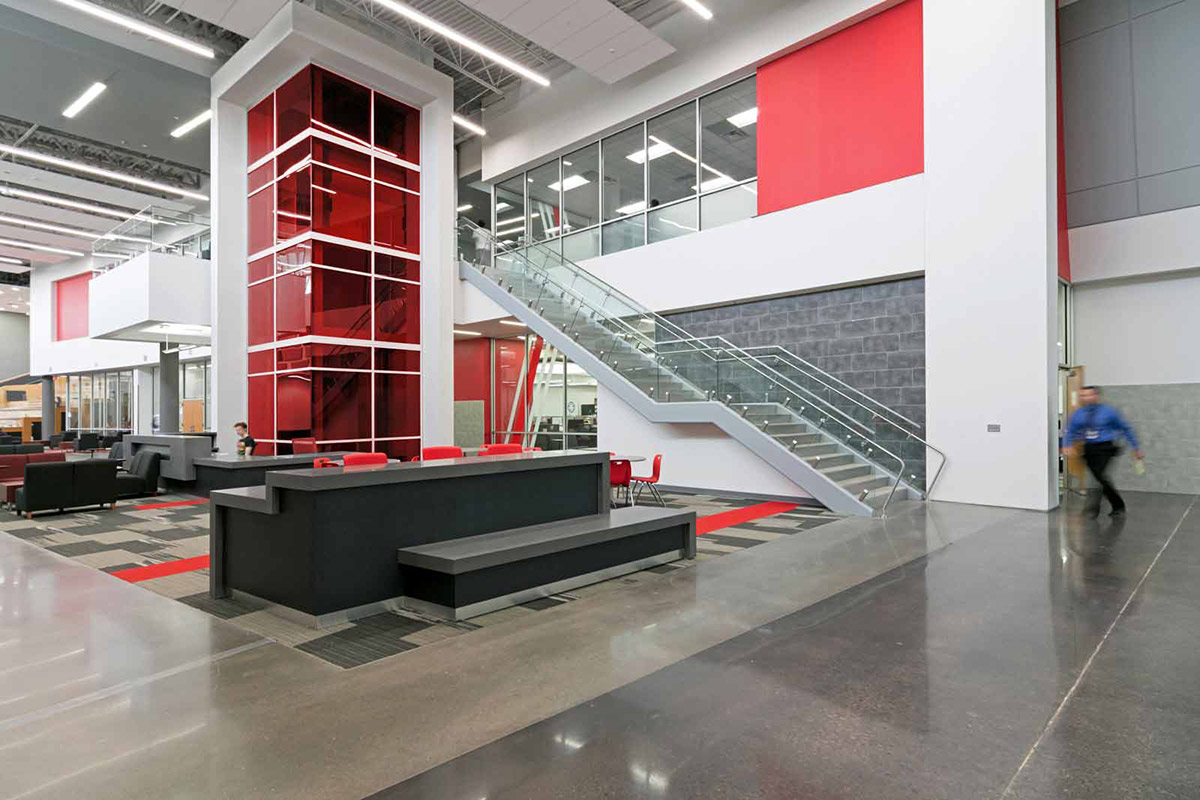
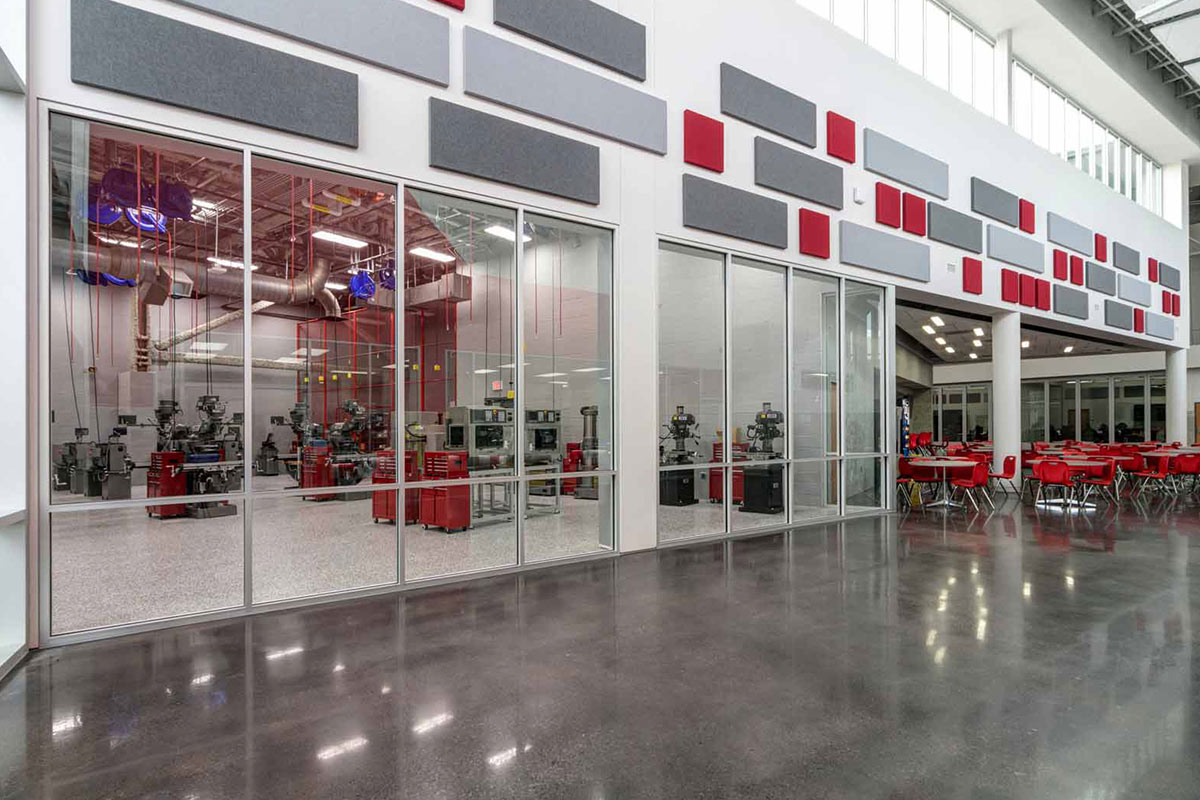
Owner: Arlington Independent School District
Architect: VLK Architects Inc., Fort Worth, Texas, www.vlkarchitects.com
Concrete Consultant: David Stephenson, Polished Concrete Consultants, McKinney, Texas, www.polishedconsultants.com
Polished Concrete Contractor: ModernCrete Concrete Designs, Austin, Texas, www.moderncrete.com
Scope of Project: Specifying, placing, finishing and polishing floors for a 165,000-square-foot career and technical center.
Biggest Challenge: Repairing the center’s concrete floors that were damaged with millions of divots and gouges caused by other trades during construction.
Products Used: RetroPlate chemicals used throughout for densifier and stain protection, Ameripolish gray and black dye used for color, Hi-Tech joint fill and colored grout fill materials.
“One of the committee’s priorities was the center had to have more of a corporate feel than that of a typical high school,” Harris says. “This led us to lean toward the use of concrete (on the floors) because it can be used in so many different ways to produce many different finishes.”
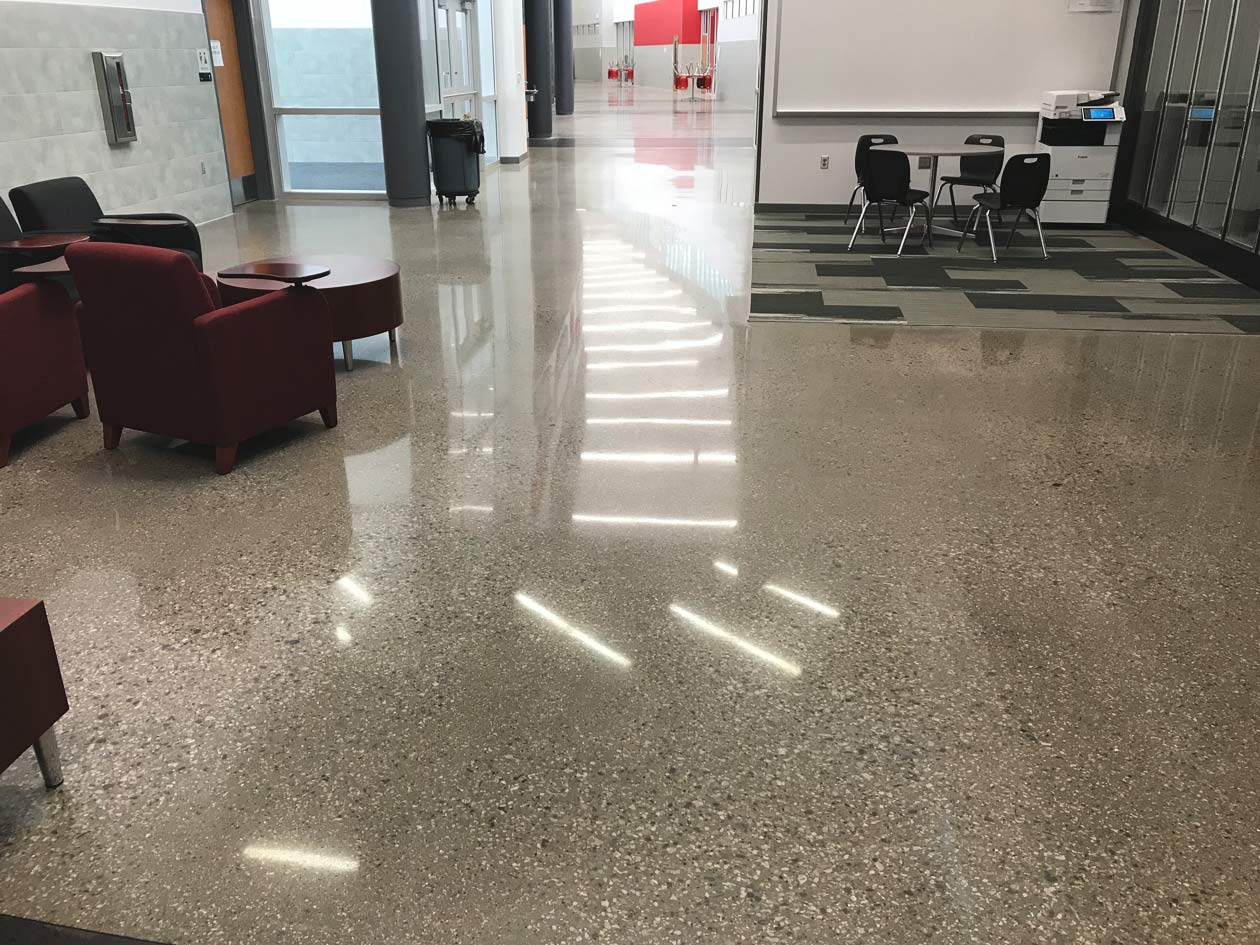

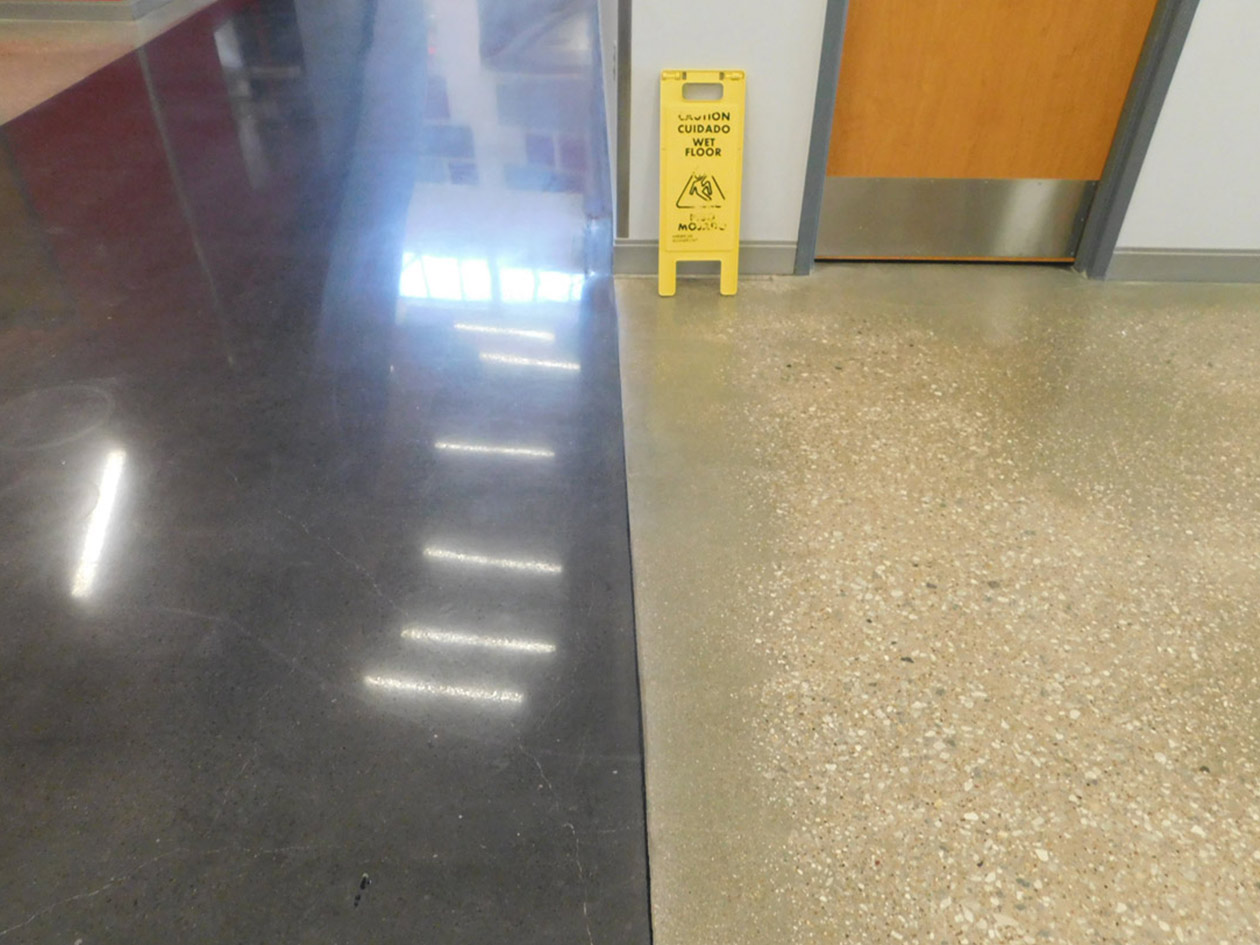
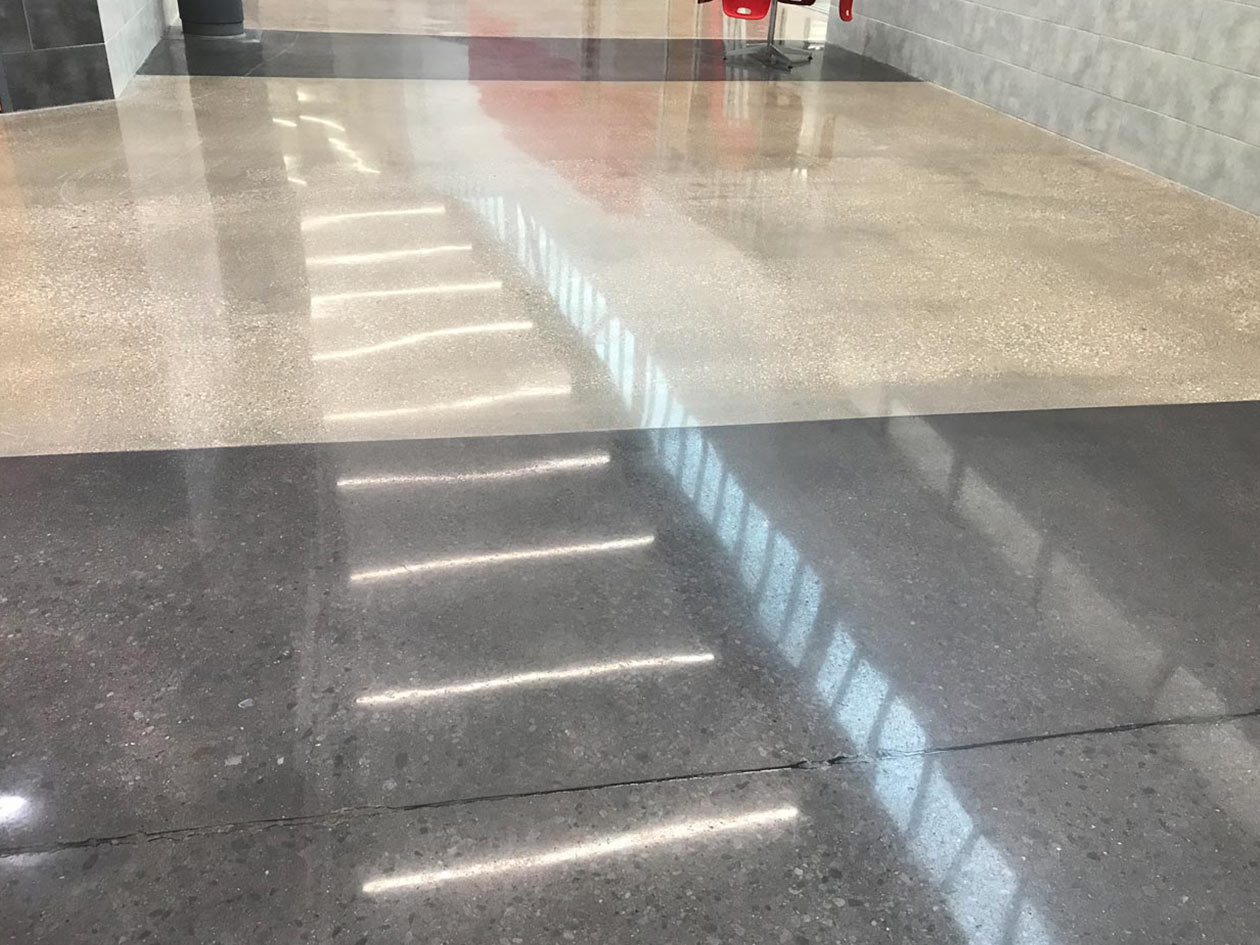
“We have been specifying polished concrete for about 12 years,” Harris says, especially for facility floors that get heavy use or are under a lot of stress. “We like to use it to enhance the design of public space because of its many patterns, dyes and different levels of grinding.”
In the CTC’s case, Harris says, about 80% of the floors were specified to be polished concrete.
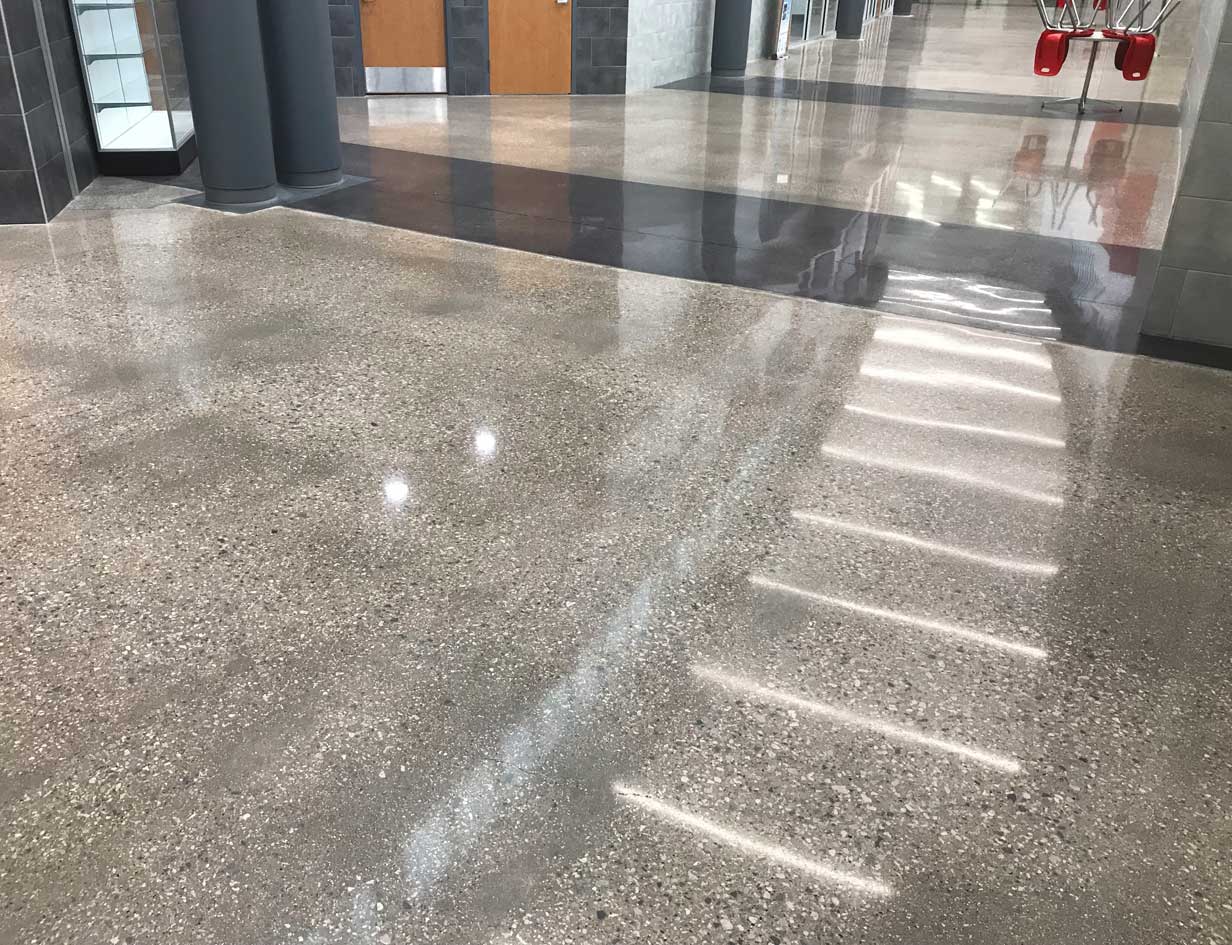
When it came time for the clients to accept the final finish, they had to reject the concrete — not because the overall design wasn’t met or the work wasn’t done to specifications, but because of the extensive damage to the surface.
“The overall lack of care resulted in gouges and divots all over the concrete,” Stephenson says. “Millions of them came from screws in the tires of heavy lifts and nails in pallets that were dragged across the floor.”
They had two options to remedy the situation: put a new floor finish over top the concrete or grind down deeper than the damage.
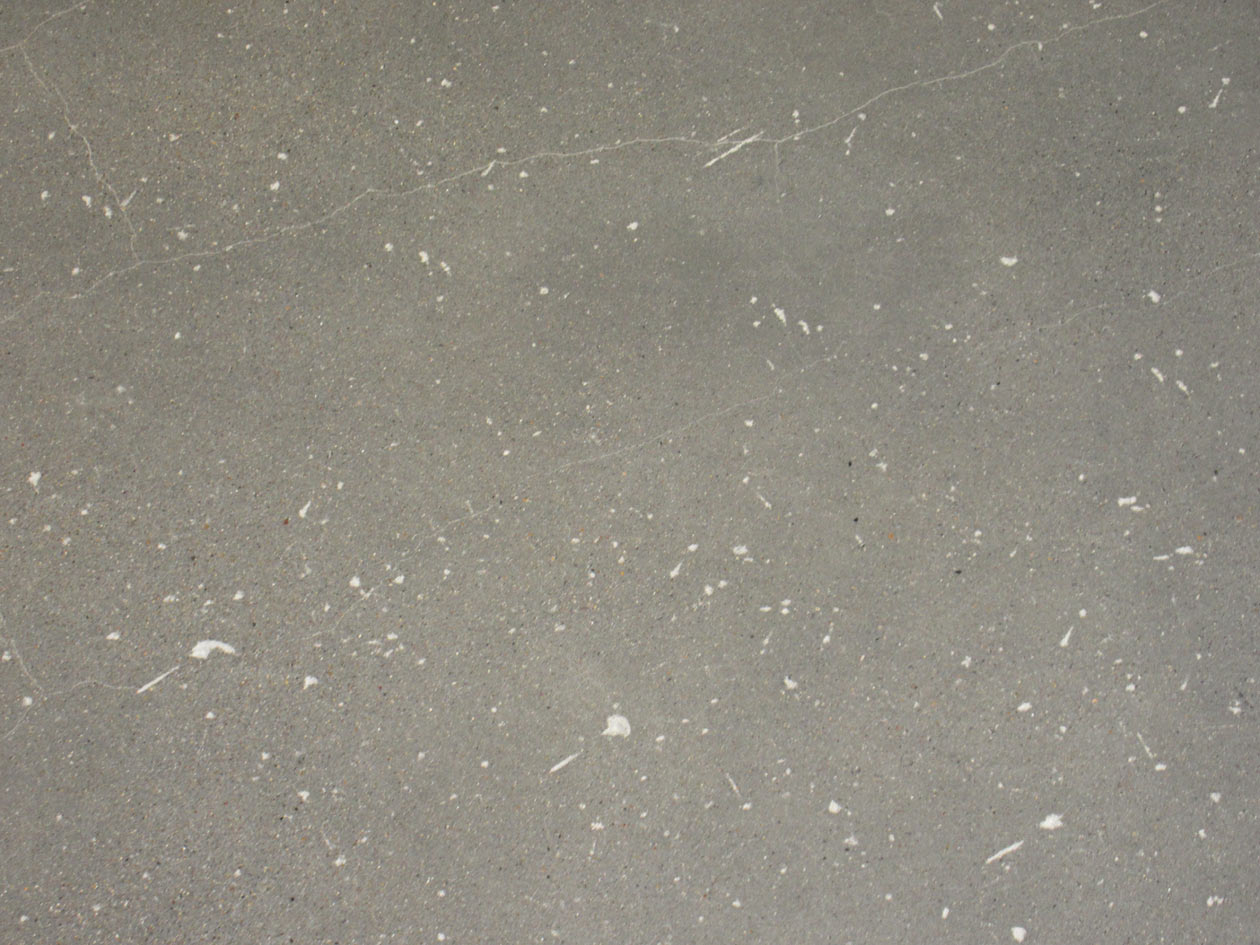

The polishing crew from ModernCrete Concrete Designs ended up removing more than 9 tons of concrete, exposing nickel and quarter-sized rock. “The exposed large aggregate opened up air voids so we had to come back through with several coats of epoxy grout to fill them in.”
In the end, Stephenson says, “Parts of the floor have a terrazzo appearance and an extremely high gloss because it was ground so many times.”
What could have been a major fiasco, he adds, “turned out to be one of the nicest jobs we’ve done in a long time.”